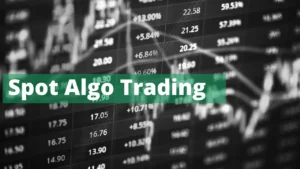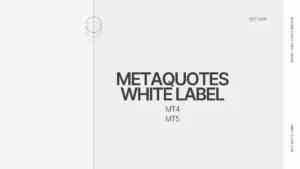Understanding Order Book
An order book is a dynamic electronic list of buy and sell orders for a specific security or financial instrument, organized by price level. It serves as a vital component of most financial markets, including stock exchanges, forex trading platforms, and cryptocurrency exchanges, providing a transparent view of market activity. Understanding the order book is crucial for traders and investors who want to grasp the intricacies of price formation and market dynamics.
Key Takeaways
- An order book is an electronic list of buy and sell orders for a specific financial instrument, organized by price level, providing transparency into market activity.
- The order book is divided into two sides—bids (buy orders) and asks (sell orders), with the spread being the difference between the highest bid and the lowest ask.
- Common orders in an order book include market orders (executed immediately at the best price), limit orders (executed at a specified price or better), stop orders (triggered when a specific price is reached), and iceberg orders (large orders partially visible in the book).
- The order book continuously matches buy and sell orders based on price and time, facilitating the execution of trades in financial markets.
Key Components of an Order Book
Bid Prices: These are the prices at which buyers are willing to purchase the asset. The highest bid price is typically displayed at the top of the bid column, indicating the strongest demand.
Ask Prices: These are the prices at which sellers are willing to sell the asset. The lowest ask price is shown at the top of the ask column, representing the most competitive selling offer.
Order Quantity: This represents the amount of the asset that buyers or sellers are willing to trade at each price level. Both bid and ask columns include order quantities alongside their respective prices.
Spread: The spread is the difference between the highest bid price and the lowest ask price. A narrow spread often indicates a highly liquid market, while a wider spread suggests lower liquidity.
Types of Orders in an Order Book
Market Orders: These orders are executed immediately at the best available price in the order book. Market orders are used when the priority is to execute the trade quickly, rather than at a specific price.
Limit Orders: Limit orders specify the maximum price a buyer is willing to pay or the minimum price a seller is willing to accept. These orders are placed in the order book and remain there until they are matched with a corresponding order or canceled.
Stop Orders: Stop orders become market orders once a specified price is reached. For example, a stop-sell order activates when the price falls to a certain level, turning into a market order to sell at the next available price.
Iceberg Orders: Large orders that are divided into smaller visible portions to minimize their impact on the market. Only a part of the iceberg order is visible in the order book, while the rest remains hidden.
How the Order Book Works
The order book functions as a matchmaking engine, continuously pairing buy and sell orders based on price and time priority. When a new order is placed, the system searches for a matching order on the opposite side of the book. If a match is found, the trade is executed, and the corresponding orders are removed from the book.
For instance, if a trader places a market order to buy 100 shares of a stock, the system will execute the order at the lowest available ask price in the order book. Conversely, if a trader places a market order to sell 100 shares, the system will match it with the highest available bid price.
Analyzing the Order Book
Traders often analyze the order book to gain insights into market sentiment, liquidity, and potential price movements. Here are a few ways to interpret order book data:
Order Book Depth: The depth of the order book refers to the number of buy and sell orders at various price levels. A deep order book with many orders at different price points indicates strong market interest and liquidity.
Support and Resistance Levels: Large clusters of buy orders just below the current price can indicate a support level, where the price may find stability. Similarly, large clusters of sell orders just above the current price can act as resistance, capping potential price increases.
Order Book Imbalance: By comparing the total quantity of buy orders to sell orders, traders can gauge the market’s direction. A significant imbalance, where one side outweighs the other, may signal an upcoming price movement in the direction of the heavier side.
Practical Applications of the Order Book
Day Trading: Day traders often rely on order book data to make quick decisions. By observing how orders are being filled, they can identify short-term trends and capitalize on price fluctuations.
Algorithmic Trading: Many algorithmic trading strategies are based on analyzing order book data. Algorithms can detect patterns, such as repeated imbalances or sudden spikes in order volume, and execute trades automatically based on predefined criteria.
Liquidity Providers: Market makers and liquidity providers use order books to manage their risk and provide liquidity to the market. By placing both buy and sell orders at different price levels, they can earn a profit from the spread while ensuring the market remains liquid.
The Future of Order Books: Innovation and Evolution
Order books have served as the backbone of financial markets for decades. However, advancements in technology are leading to innovations in order book functionalities:
- Algorithmic Trading: The rise of algorithmic trading strategies involves the use of sophisticated algorithms to analyze order book data and execute trades automatically. This can lead to faster and more efficient market execution.
- Decentralized Order Books: The emergence of blockchain technology has led to the exploration of decentralized order books. These order books could potentially enhance transparency and security by eliminating the need for a central authority.
As the financial landscape continues to evolve, the order book will likely adapt and integrate with new technologies, ensuring its continued relevance in facilitating efficient and transparent market activity.
Conclusion
The order book is a powerful tool for understanding market dynamics and making informed trading decisions. By mastering the intricacies of the order book, traders can better predict price movements, manage risk, and develop more effective trading strategies. Whether you’re a seasoned trader or just starting, taking the time to understand the order




